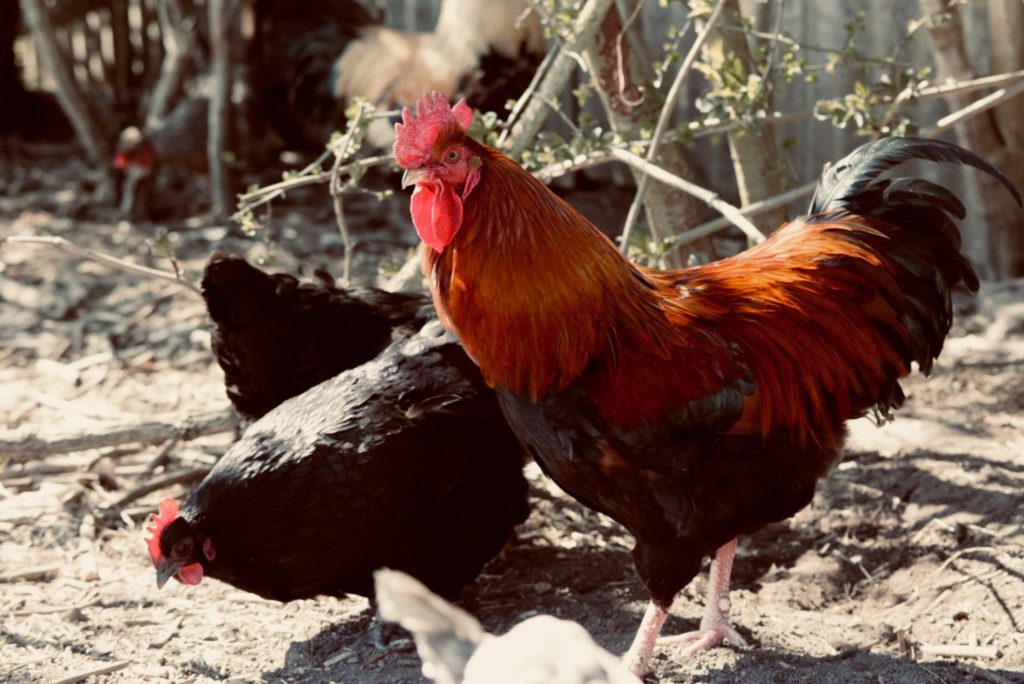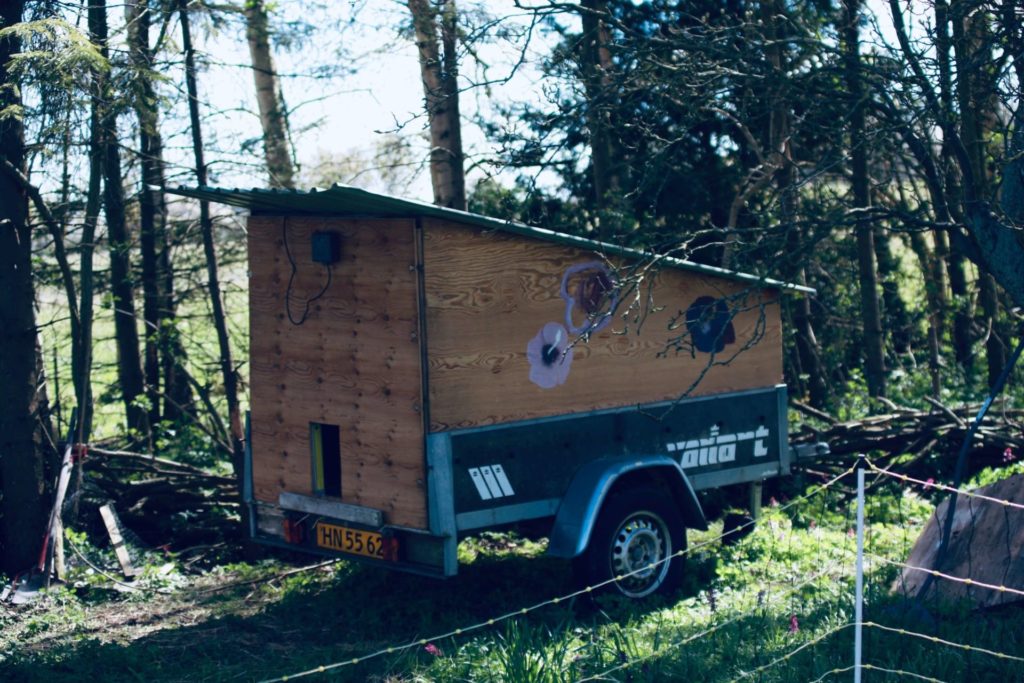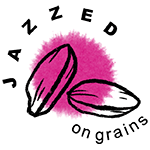There?s a global seed bank on Svalbard in Northern Norway. For the same reasons, you?ll find a gene bank for poultry in the Netherlands. But none of them can with absolute certainty guarantee a reboot of human life if (or when) doomsday comes.
In fact, some scientists argue that the sure-fire way to preserve diversity and human culture is the cultivation of heritage crop varieties and/or keeping purebred animals. Regardless, the intrinsic value of choosing to work with heirloom chickens, which Signe Hauritz and Mads Bruun keep on their regenerative farm, is unquestionable.
Estimated reading time: 11 minutes
Say doomsday and a Hollywood blockbuster may come to mind. Technically, it is probably apt to link doomsday with some apocalyptic scenario, like a military-induced influenza virus that almost wipes out humanity, as depicted in The Stand by Stephen King.
Perhaps it would be fair to also apply doomsday, or at least the feeling of impending doom, to more narrowly defined realms in actual space and time. Then the Dust Bowl period during the Great Depression in the early 1930s on the American and Canadian prairies comes to mind, or the Great Chinese Famine, which killed tens of millions of people from 1959 to 1962. For the people affected by disasters like these, it must have felt like doomsday.
BREEDING DANGER
Ecological tragedies related to agriculture are no news. Still, with the last 70 years of industrialized farming, humankind has stacked the odds in favor of total annihilation.
Conventional farming in the industrialised world is dominated by crop varieties and livestock breeds with high yields and rapid growth, which comes at a very steep price from a food and health perspective. But to grasp the existential danger of this, one would have to calculate the risk of running into some disease or mutation these varieties and breeds could not handle. If combined with extreme weather conditions due to climate change, we could face a grim scenario. Because when it rains, it pours; just add a couple of things to this scenario, and we would have a worst-case situation:
- The vault on Svalbard is destroyed because of an electrical malfunction of the cooling system.
- Alternative small-scale farmers abandon their land and inheritance of seeds and breeds.
Hey, presto! That’s all it takes to put humanity in a situation without a shred of intergalactic hope. No small group of survivors could shuttle off to colonize some other planet because the crop sorts and animal breeds that enabled human civilization from the start had been lost. We could not start over on earth, or any other planet, since we lost our heritage grains and livestock DNA:s at the altar of high yield and fast growth.
But perhaps by then we will have food replicators, like in Star Trek? Well, perhaps.
DECOMMODIFYING POULTRY
When you grasp the inherent value of heritage grains and purebred livestock, it immediately puts farmers such as Signe Hauritz and Mads Bruun in a bigger perspective. To dismiss them as economically unrealistic because they do not think ?scale”, becomes irrelevant.
With that said, what is up with those purebred chickens?

Conventional broiler breeds are made to suffer and become food commodities within a lifespan of 42 days. The mainstream broiler breeds, which dominate the chicken and egg supply in Danish supermarkets, would therefore never set foot on Signe Hauritz and Mads Bruun?s farm, Kl?verlund.
– I want our chickens to express natural behavior and be an integrated part of our fields. That means caring for chickens that come from pure breed lines.
– But even though we buy heirloom chickens, we are not separating the different varieties from each other at our farm, so the new chickens that get hatched will be a mix of pure breeds. Except for the Bresse breed, we keep them in a separate flock, because we want them for both meat and eggs, Signe says and explains how the mainstream kind couldn?t handle the freedom Kl?verlund offers, physically or psychologically.
She refers to the modern broilers who can barely survive beyond 50 days or spend considerable time outside. In the wake of the criticism against the chicken industry, there are slow-growing hybrids on the rise. But they offer little hope.
WHAT ARE BROILER CHICKENS?
In Denmark, nine out of ten chickens produced are from the broiler breed Ross 308. These non heirloom chickens are ready for slaughter after only 33 days. The speed of growth gives them a higher mortality rate, very frail bone structure, and organ failure since the body can?t keep up. The ethical implications of this have, however, affected the market.
Last year (2020), one of the more prominent chicken producers in the country (Danpo) replaced the Ross 308 with a race called Ranger Gold. The latter counts as a slow-growing breed because it needs ten more days (46 days in total) to be ready for the supermarket shelves.
In the US, there are slow-growing breeds labeled as ?heirloom? because they are produced from pure lines and don?t come from the conventional broiler line. But they are still genetically altered to be pretty fast-growing, taking only 60 days to reach market weight. True heritage breeds take at least 112 days to grow.
HENS DO NOT WANT TO BE EGG-LAYING MACHINES
For Signe, breeding chickens for the egg industry is just as sad a story.
– Those hens are made to lay as many eggs as possible during a year. Then they are shipped off to become animal feed.
Since chickens lay more eggs during the summer or when the days are longer and sunnier, the egg production factories keep the lights and specific heating lamps on for longer to fool the chickens into being more productive.
Signe and Mads do not want to be part of a system where birds are given no more than 6 hours of sleep in order to lay more eggs or eat more to grow faster.
– I want our chickens to lay eggs if and when they feel like it. And chickens that feel good lay eggs often enough.
– They also taste better, Signe says and confirms that she does not keep chickens for meat. She also regards the eggs they lay as a bonus.
CHICKEN BREEDS AT KL?VERLUND
Signe Hauritz and Mads Bruun have heirloom chickens at their farm from the following breeds.
| Breed | About | Life Expectancy |
| Bresse/La Poulet | Good for both eggs and meat; lay light blue eggs | 5-10 years |
| Cr?me Legbar | Suitable for eggs, lay small eggs of different colors like blue or green | 5-10 years |
| Marans | Suitable for both egg and meat, lay large dark chocolate colored eggs | 8+ years |
| Welsumer/Welsummer | Suitable for eggs, lay large deep brown eggs, a color that can be wiped off the eggs | 5-8 years |
| Australorps | Good for meat and eggs. | 8+ years |
EGGS AS A BONUS
Kl?verlund?s approach doesn?t make their egg production predictable, even though the current flock of 13 birds lays about five eggs per day on average. The eggs are offered to customers who subscribe to their vegetable CSA as an add-on, based on availability.
Kl?verlund is small-scale and early in its journey towards becoming a full-fledged regenerative farm.
– To calculate if the chickens are a good return on investment for us, we need to see how good they are as soil improvers, Signe says.
– Their actual value lies in their ability to add value to the farm?s ecosystem and not on how many eggs they can produce.
– We are preparing so our flock can move around on the fields, especially in our walnut tree area, where they can peck worms, eat grass, and remove weeds.
To move the flock around, Signe has built an ?egg mobile?.
– I took our old and used trailer and built a portable house for the hens.

INTEGRATED CHICKENS
Signe and Mads are about to add sheep to their land, a couple of specimens from an ancient Danish race. They will be integrated into a rotational grazing plan, where the chickens follow in the sheeps? steps. That way, the chickens will tear up the sheep manure and spread it around while they eat the bugs?working miracles for the soil.
Chickens are omnivores, which means that they eat and thrive on anything. The small flock of 13 birds at Kl?verlund has a diet that mainly comprises grass and insects they peck up. A grain feed mix that Signe has compiled complements this.
– Our goal is to only complement their diet with seeds and grains grown on the farm, she says and explains that there is no manual for creating ?the perfect chicken feed?.
– I have researched and talked to other farmers like me on social media forums to learn how to make sure the grain mix has the right amount of vitamins, fatty acids, and proteins.
As a regenerative farmer in the making, Signe likes to underline that chickens are good livestock to start out with . She thinks they are easy to care for, and the eggs do their own bidding if you want to sell them at a higher price tag. First, they come out in different colors, and then the egg yolk has this deep yellow color, while the egg white lacks that watery quality typical for the ones you find in grocery stores. It?s easy for the buyer to see why the eggs must have a higher nutritional value. They have a wow-effect.
– My goal is to have three flocks with thirteen hens and one rooster each.
CHICKENS THAT GET ALONG
Signe has a master?s degree in pedagogy from the University of Roskilde, where she graduated with top grades. Interestingly enough, her background is of great use when tending to the farm animals in general, and the chickens in particular. The birds have different temperaments and personalities, making it of keen interest to pair the right individuals in a flock.
– My goal is to have three flocks with thirteen hens and one rooster in each.
Keeping chickens in larger groups than this would be too crowded, she thinks.
– It?s important for us that the birds get to live according to their instincts and behavioral needs.
Signe explains how traditional breeds , have traits that make them good brooders and good at taking care of their offspring. Or how they can actually mate naturally and are disease and parasite resistant.
Some heirloom chickens or purebreds are more influenced by natural selection than by selective breeding by humans. The latter is a type of? domestication that goes?back centuries. Natural selection, however, is developed in response to environmental conditions and has existed before people identified them.
BACK TO THE FUTURE
Signe and Mads could be described as value-driven farmers determined to go back in time in order to move forward into the future in a more sustainable manner. Their very existence puts the spotlight on the last 70 years of industrialization of farming and food production. And its unintended consequences.
Until the middle of the last century, heirloom chickens were bred and raised in backyards and on small local farms. These farm chickens, of many sorts, were kept for both egg and meat.
Then farmers began to specialize in broilers. In 1952 broiler production surpassed farm chickens as the primary source of chicken meat in the US. The same storyline appears in Denmark and other western countries.
Several factors in the US as well as in Denmark transformed chickens into a full-fledged commodity: like supplements, medication, antibiotics, no-outdoor-policy.
Genetic selection, however, was the single strongest enabler. Poultry breeding companies set their minds on creating the most economical and fastest-growing birds: meat- and egg machines, with no regard to genetic diversity or animal welfare. The bird?s ability to act out its natural behavior, the traits that had made purebreds resilient, fell to the wayside.
HAPPIER, TASTIER, PRICIER
But the poultry factories are not all-encompassing. Signe and Mads are not alone. Even countries and organizations are working towards a more sustainable food system.
In France, for example, the government created a standard that goes beyond slow growth genetics. It is called Label Rouge and was established already in the 1960s to preserve heritage breeds, meat quality, and traditional farming methods.
To get the Label Rouge, the chickens have to have a minimum growth rate of 81 days. And they can only be of regional breed crosses that are approved under the label and adapted to the outdoors. The standard also addresses lower density in houses, smaller flock sizes, access to pasture, and specific feed ingredients.
Skeptics question if there is a market for standards like this. Label Rouge proves them wrong by commanding 25% of chicken sales in France. Despite being nearly twice as expensive as conventional chickens.
So there is hope. There are safeguards against doom, other than the seed vault on Svalbard, and the gene bank in the Netherlands. And perhaps now there is more fertile ground for such hope than ever before.
ALSO READ



